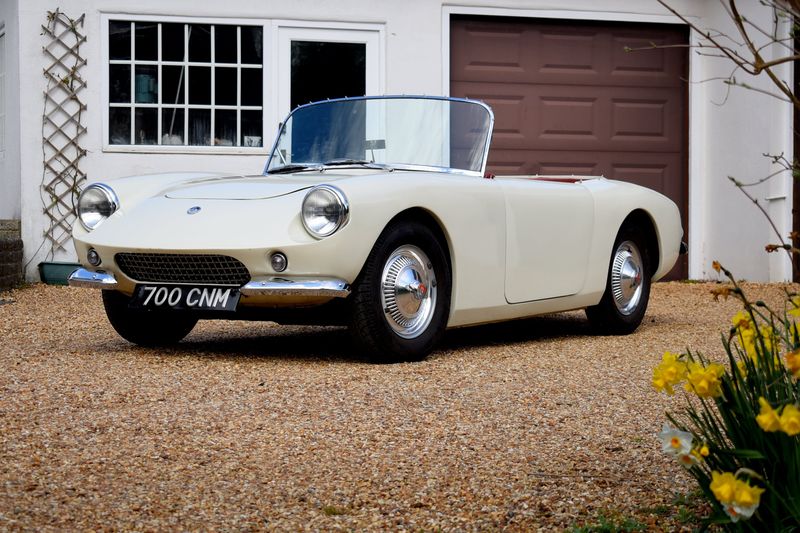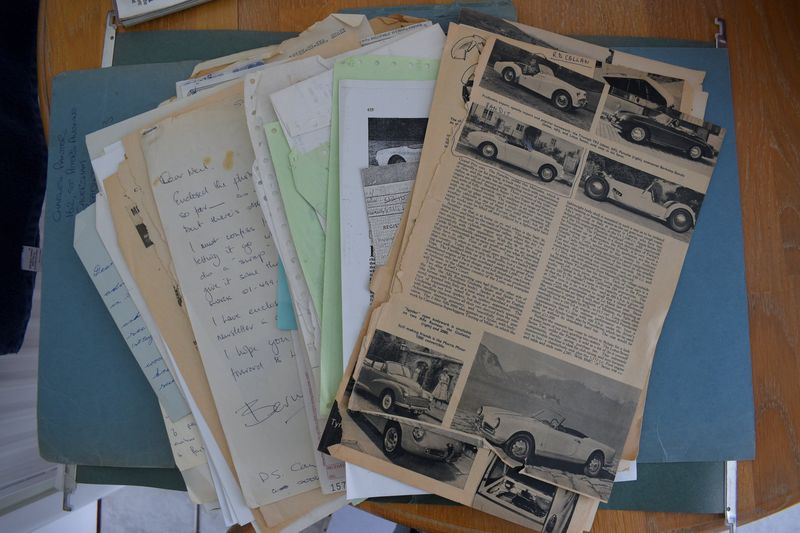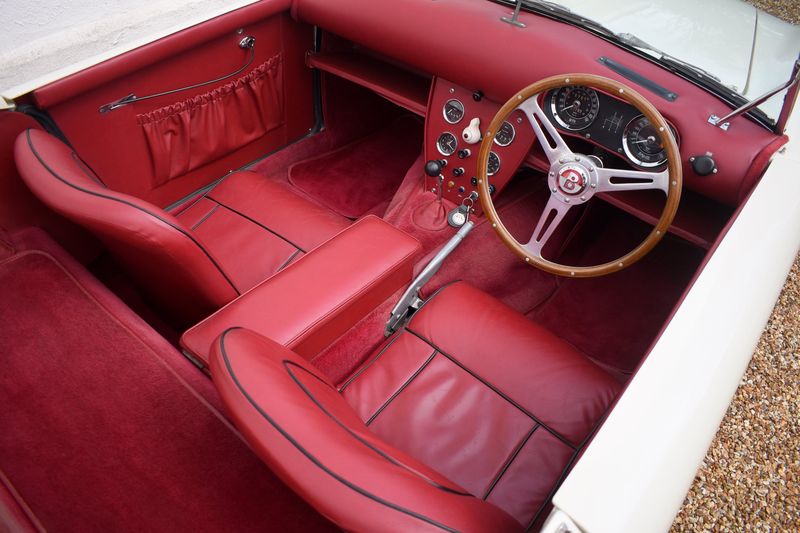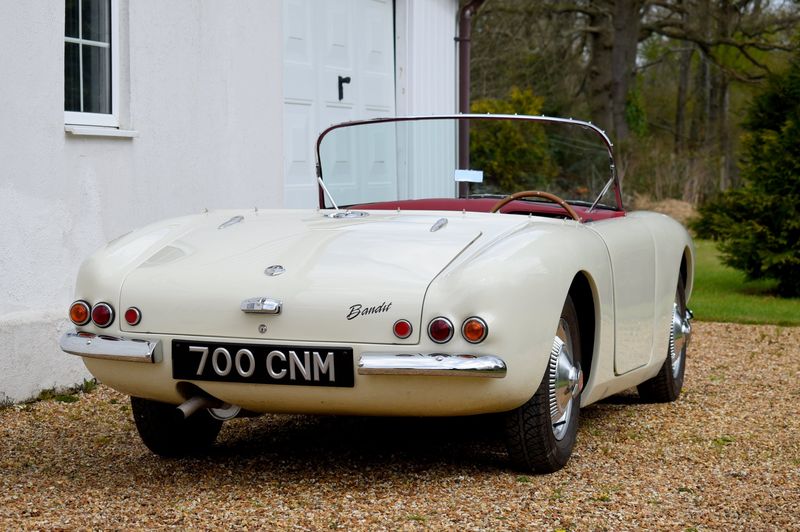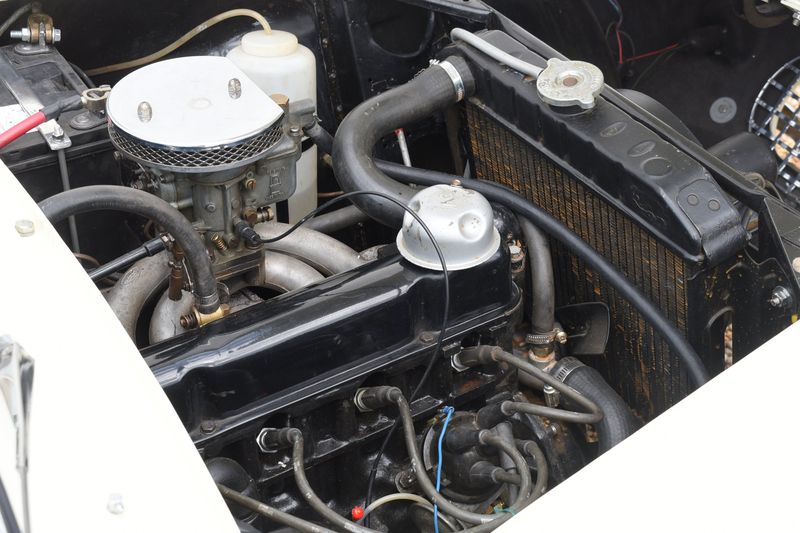Highlights
• The only survivor of two prototypes, and the original Motor Show and press car
• Painstakingly restored after an accident throughout the 1980s and ’90s
• Featured in numerous historic motoring journals and contemporary classic-car magazines including The Autocar, The Motor, Classic & Sports Car and Thoroughbred & Classic Cars
• Owned by an engineer, collector and Berkeley enthusiast who has stored it in safe conditions since 2002
The Appeal
Anyone who wants a small sports car with lively performance and pretty looks will probably be drawn towards a ‘Frogeye’ Sprite, but what if there was something even better? If only it had seen production, such a car would be the Berkeley Bandit.
Berkeley Cars of Biggleswade is best-known today as the maker of very small, fibreglass three-wheeled sports cars powered by two-stroke, air-cooled motorcycle engines with chain-drive to the front wheels. They were affordable, very thrilling to drive and enormously successful in competition, but sales were never high.
For a time, Berkeley had few rivals, but the appearance of the more conventional Austin-Healey Sprite in 1958 was a serious threat, so Berkeley began developing a car along conventional lines, with the support of Ford, which provided the new 997cc engine, gearbox and rear axle from the 105E Anglia. It also benefitted from very pretty styling by John Tojeiro.
Named the Bandit, two prototypes were built in 1960 ahead of 1961 production. Where it deviated from the Anglia and stole a lead over the Sprite was with its use of independent rear suspension and 8in. front disc brakes. It also had a roomier and better-appointed interior than the Sprite and it even had a proper boot, a luxury not afforded to Sprite owners.
Sadly, it was not to be. Berkeley already had financial troubles and went into insolvency at the end of 1960, before the Bandit could revive its fortunes. Of the two prototypes, only 700 CNM – the 1960 Motor Show and press car – survives, with all trace of YRX 292 having been lost in the late 1960s.
700 CNM almost didn’t make it, as it was involved in a catastrophic accident in 1965, but it was discovered by the Berkeley Enthusiasts’ Club in 1981. Club historian Bernie Pearson began its restoration, which was completed by Neil Barber in 1998.
It now survives today as a unique example of what could have been one of Britain’s finest small sports cars. We think it would be a privilege to be tasked with preserving this important piece of motoring history and your efforts are sure to be appreciated by other enthusiasts, who will be delighted to see the Bandit out at shows and rallies.
The History and Paperwork
• Extensive documentation from new reveals the car’s early history and restoration in thorough detail
• Paperwork file includes the current V5 and a photocopy of the original buff logbook
• Photo album containing an extensive collection of original press photographs of both Bandits, including pictures with Berkeley’s Charles Panter
• Large number of photographs detailing the restoration from beginning to end
• Copies of all its period magazine features, plus complete issues of The Motor, October 12 1960, Classic & Sports Car June 1982 and Thoroughbred & Classic Cars November 2000
• Extensive collection of invoices from the 1960s onwards
• A handful of MoT certificates, the most recent dating from 2001
The Interior
• Moderately luxurious for a small sports-car
• Excellent overall condition following restoration
• Relatively spacious boot contains the restored spare wheel
The Bandit has seen very little use since its restoration was completed in 1998, and it shows in its spectacular condition. Trimmed in a wonderful racy red, the vinyl seats are excellent and we cannot see any evidence of deterioration over the last 24 years. With their cable-operated locks, the doors are a fairly Spartan affair, but that just means there is little to go wrong with them. We looked but really couldn’t find anything to fault with the door cards, bar the smallest marks at the edges. The soft carpets are virtually spotless, too.
The theme continues across to the dash and centre console, with its aircraft-like cluster of gauges. We would point out that the instrument cluster includes a Smiths clock, an extra little luxury which you wouldn’t have found in many Sprites. Do take note as well of the padded dash, which looks to be a safety-conscious touch far ahead of its time. An immaculate wood-rimmed, aluminium-spoked steering wheel is its crowning glory.
Between the seats, what looks at first glance to be a vinyl padded armrest lifts up to reveal a handy cubby hole, and there is also a carpeted luggage space behind the seats in addition to a proper boot. Contrast this with the Sprite, which had no opening boot but instead required owners to tilt the seats forward and stuff luggage awkwardly into the empty space behind them.
The Exterior
• Restored in its original white
• Not far from being a potential concours star
• No hood, and it shouldn’t have one!
Looking a little bit like a cross between a Sprite and an Elva Courier, the Bandit is an impishly charming car. Some enthusiasts have even noted a visual similarly to the Ferrari 275 GTS of 1964; perhaps the Bandit had caught Il Commendatore’s eye in the 1960 Motor Show reports… With a fibreglass body, it’s off to a good start because it weighs next to nothing and isn’t going to suffer from corrosion.
If you see the extent of the damage the car sustained in its accident, you’ll understand why the body had to be recreated from new moulds made in the special effects department of Lee Film Studios. It looks absolutely spot-on, though, and the white paint in which it was originally finished suits it very well.
Since the restoration, the paint remains close to perfect but has acquired just a few tiny blemishes, such as a little chip around the edge of the cockpit (where the hood would join the body, if it had one) and a few small areas at the front edge of the car which have been retouched. The brightwork is all in superb condition, with some of the chrome just starting to acquire an extremely light but quite attractive patina.
One of our favourite features is the stainless steel wheel trims, which have polished up to a high shine and dress up the wheels really nicely. They sport a few very light marks, but are not far from immaculate.
There is just one thing bidders may have a query about, which is the absence of a hood. As the prototype, this car was finished in something of a hurry and it never received a hood from Berkeley, although one had been intended for production. While there may be some temptation to fit a hood, we might suggest that the car is worth more in its original state and would advise against any modifications, reserving it for fine-weather use. Berkeley did make a tonneau cover for it, though, and that is present.
With just a few touch-ups here and there, this could be a potential concours star. The Lost Marques class has been a highlight of the London Concours in recent years and it is a class in which the Bandit would have fitted right in.
The Mechanics
• Largely based around Ford Anglia mechanicals, so spare parts will be easy to find
• Fires up beautifully with a rorty exhaust note
• Last MoTed in 2001
Still extremely clean with little use following its restoration, the engine bay in the Berkeley looks fantastic and we believe it to be in excellent mechanical condition all-round. It runs extremely well with a satisfyingly audible, but not anti-social, exhaust note and, as far as we can tell, drives just as it ought to.
With only a few minor tweaks, such as a Weber carburettor, the engine is just as Ford intended it for the 105E Anglia, likewise the gearbox and back axle, so sourcing spares ought to be very straightforward. The Motor remarked in period that ‘For normal use, the free-revving 997cc over-square unit even in completely untuned form should provide lively enough performance for most owners in a car weighing only 11cwt – in contrast to the 14cwt of the car from which it is taken.’
Although the Berkeley hasn’t had an MoT since 2001, it has spent most of its time in agreeable storage conditions so we cannot imagine there will be any problems with it. If you do have any doubts, it might be worth giving the car a quick mechanical check before you take to the road, but we believe it’s all ready to go.
We did observe that the Berkeley no longer has its original air filter housing.
The Summary
It would be fair to say that the Berkeley Bandit is one of the greatest small sports-cars that never was. A potential Sprite-beater with so much promise, it’s a pity the Fates frowned upon it. We are fortunate, though, that one of the two survives in splendid restored condition, and with so much fascinating history and documentation.
If you like to have something different, the Bandit is an ideal car. It should be a joy to drive and is a guaranteed show-stopper at events. It’s something we’d all love to own, but only one person can. Wouldn’t it be nice if it was you?
Notice to bidders
Although every care is taken to ensure this listing is as factual and transparent as possible, all details within the listing are subject to the information provided to us by the seller. Car & Classic does not take responsibility for any information missing from the listing. Please ensure you are satisfied with the vehicle description and all information provided before placing a bid.
All bids are legally binding once placed. Any winning bidder who withdraws from a sale, is subject to our bidders fee charge. Please see our FAQs and T&C's for further information. Viewings of vehicles are encouraged, but entirely at the seller’s discretion.

